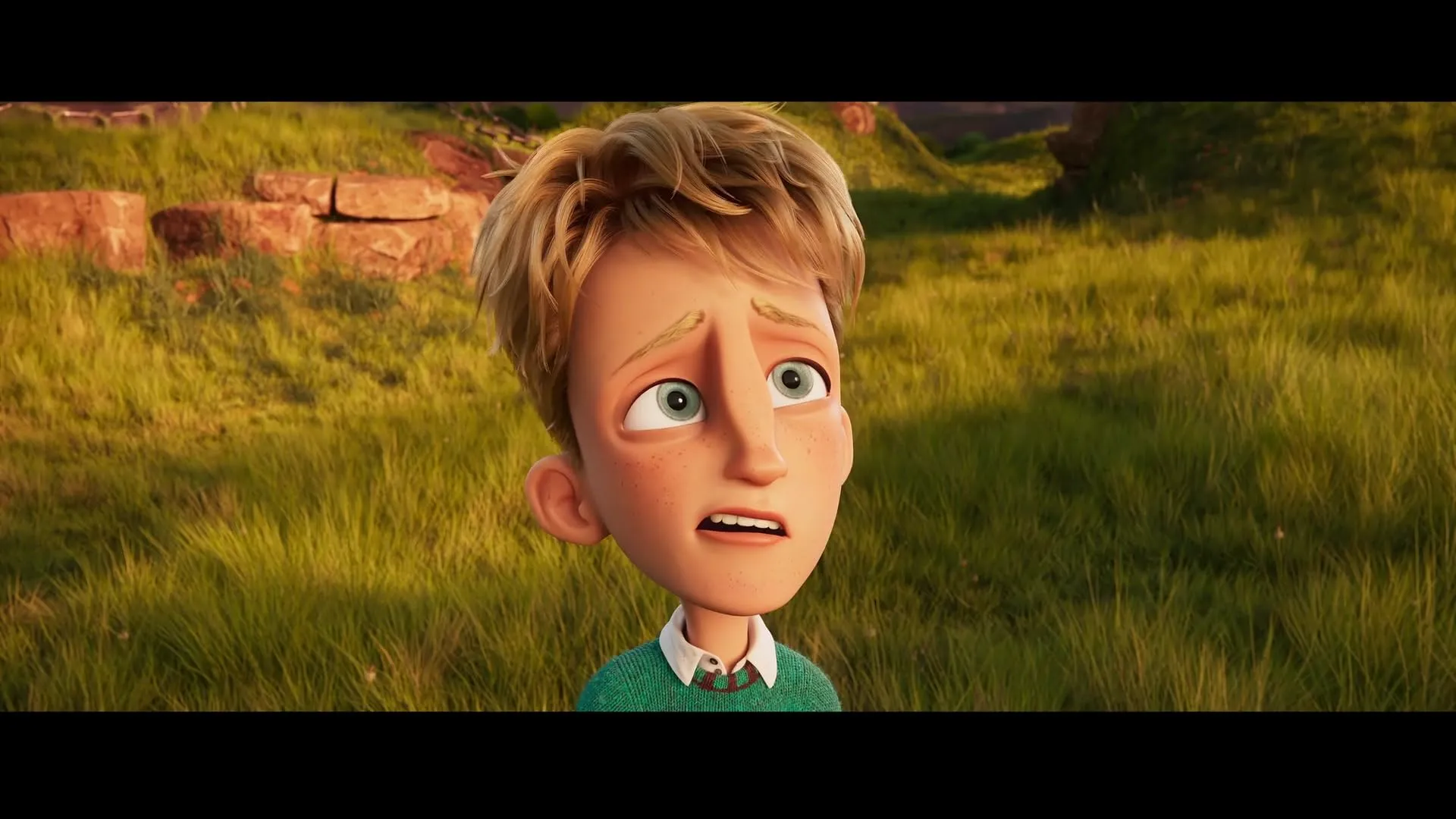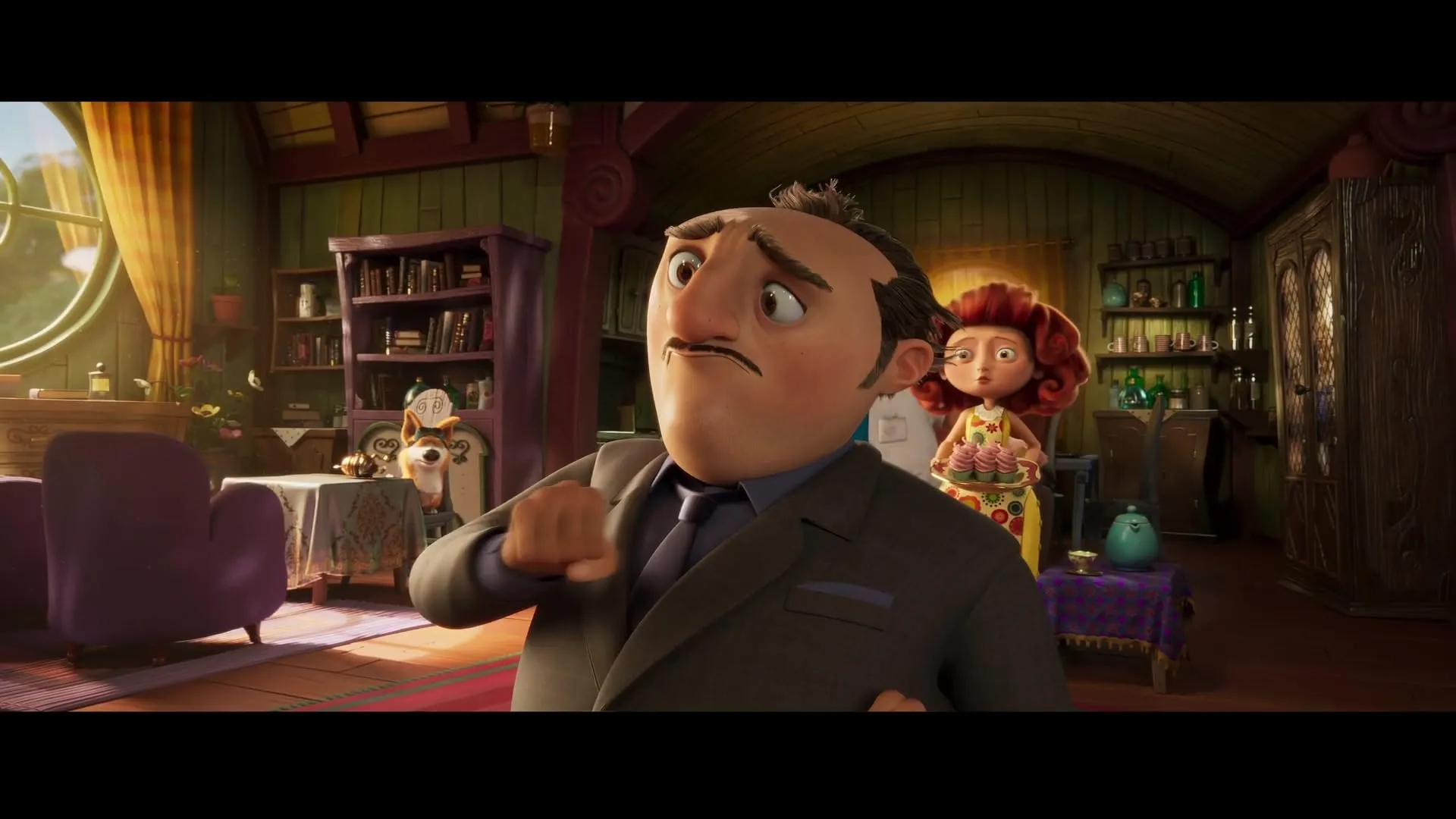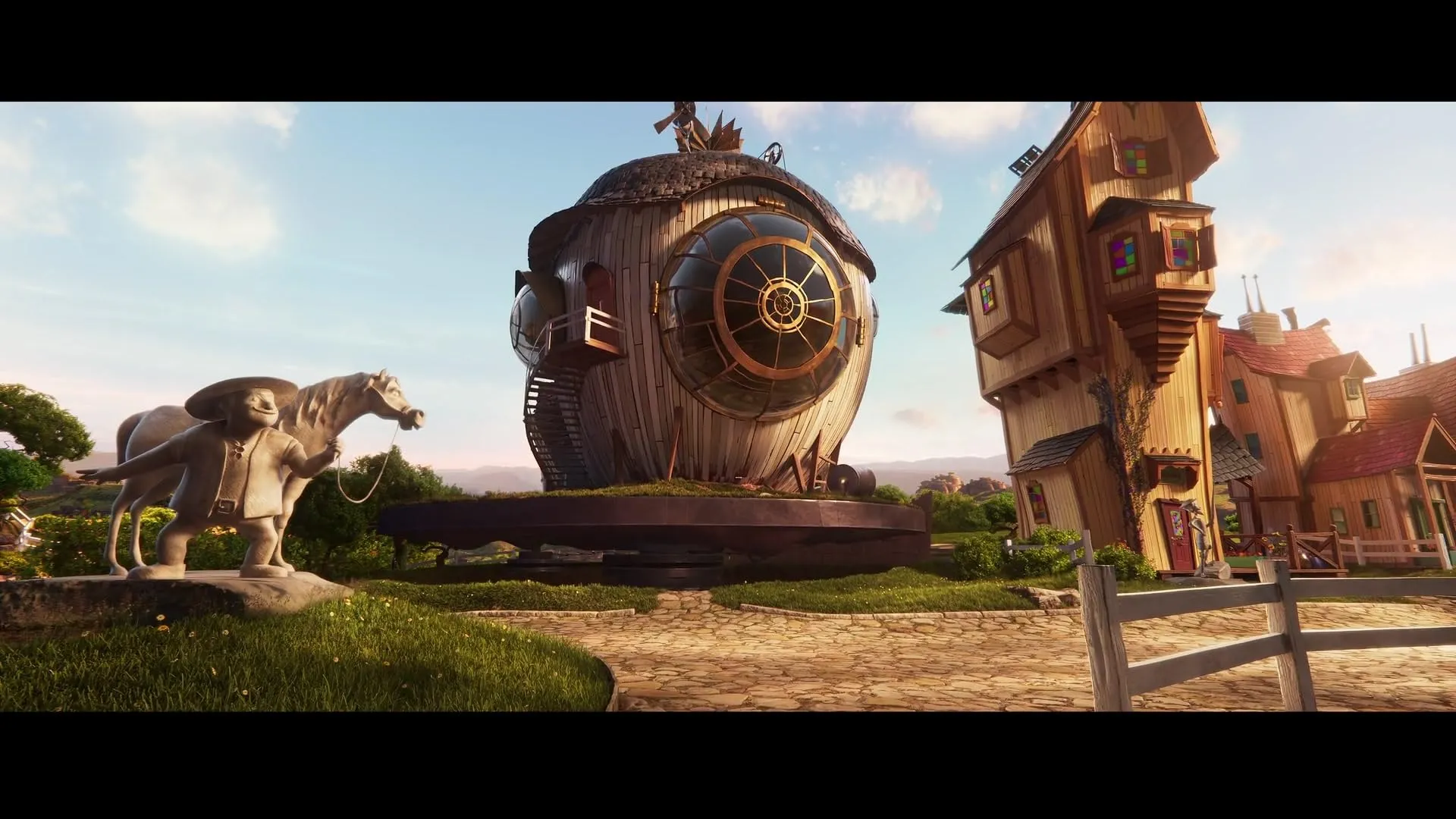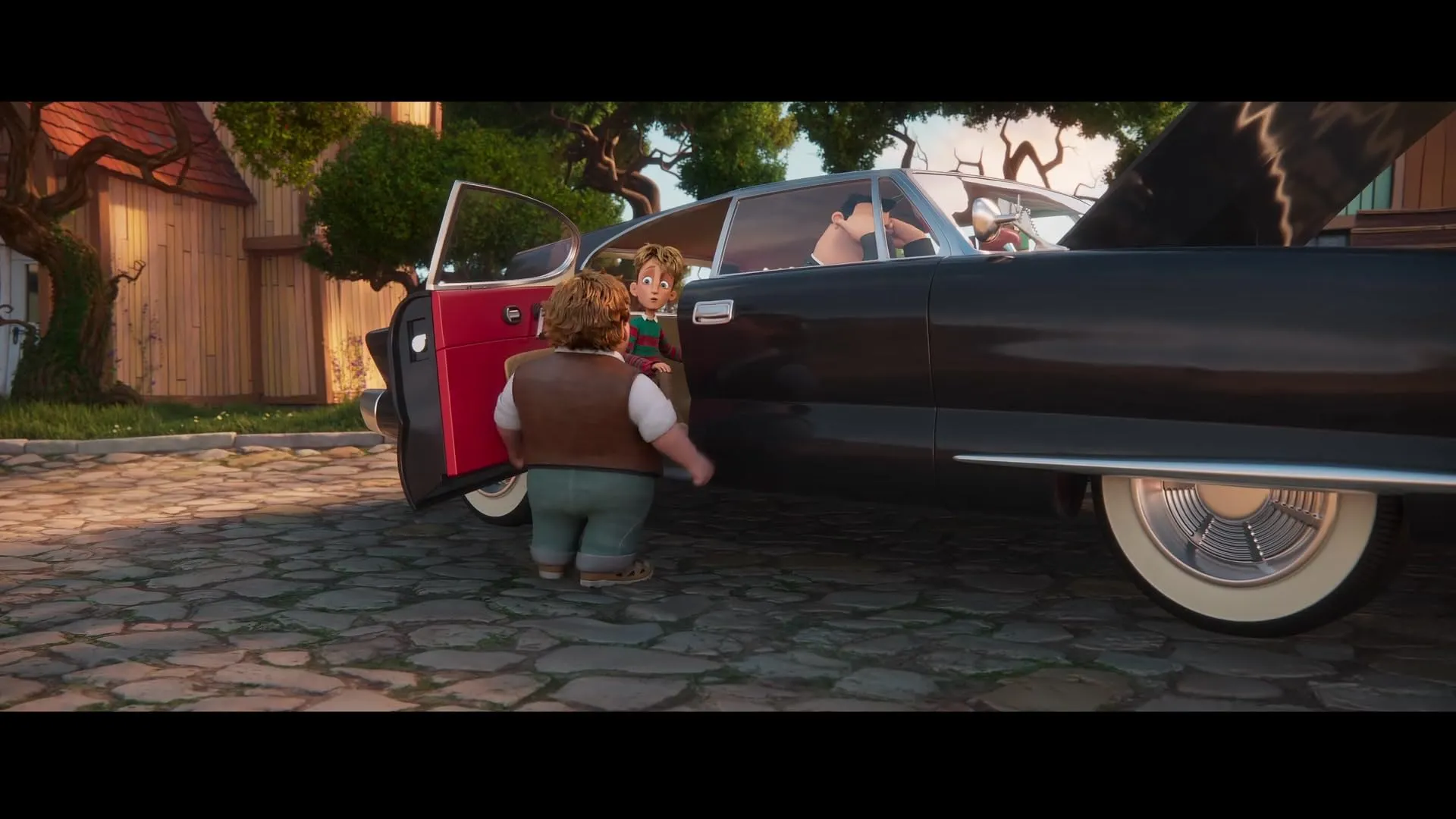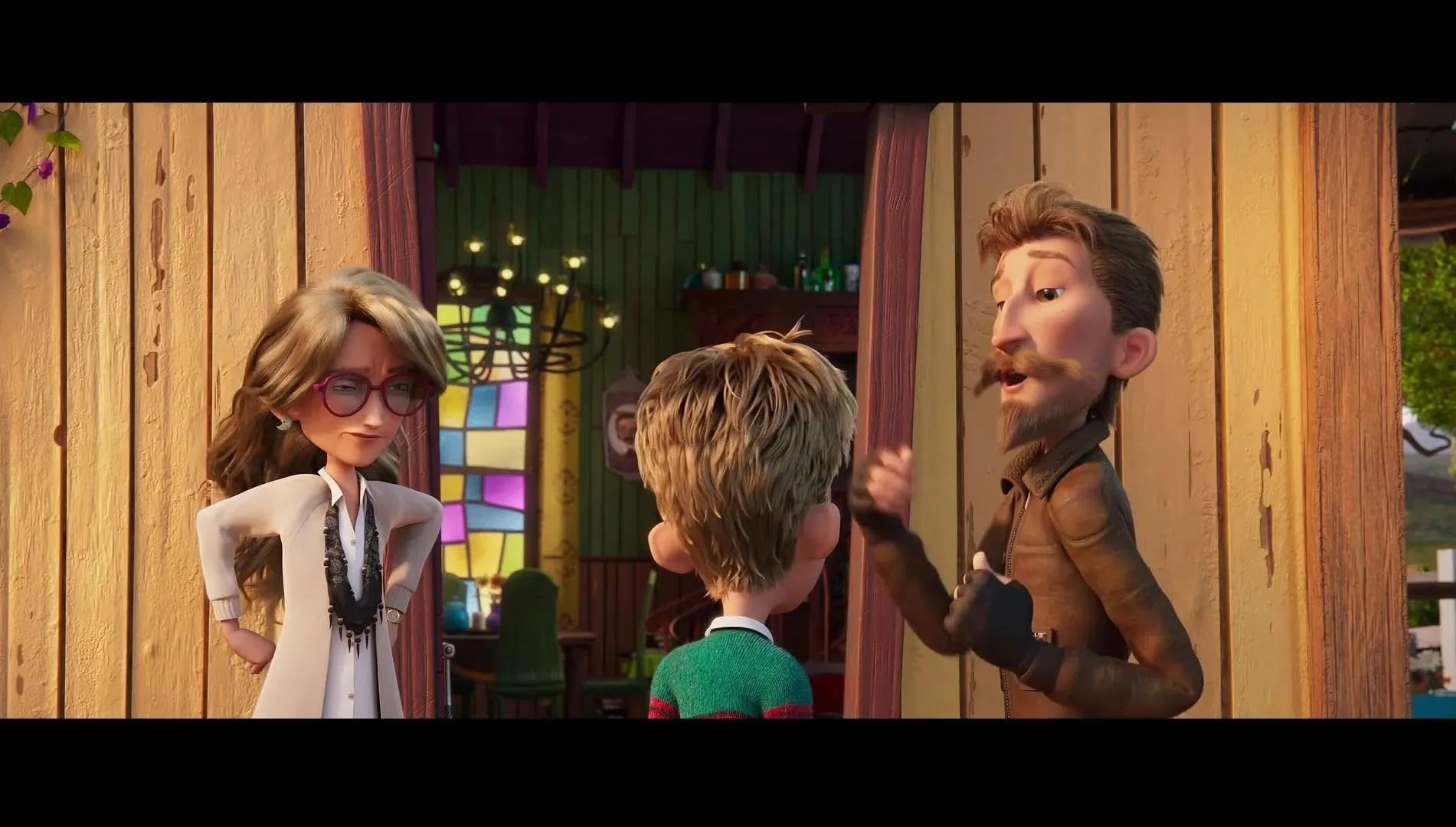From its opening swirl of storm clouds to its climactic clash with a mechanized tempest, Storm Crashers propels viewers into a reimagined La Mancha. Alfonso Quixote—a headstrong eleven‑year‑old heir of Cervantes’s hero—discovers a sinister machine conjuring violent weather that drives villagers from their homes. Tasked with rallying his loyal companions Pancho and Victoria, he confronts developer Carrasco’s plan to exploit the exodus for profit.
Directed by Gonzalo Gutiérrez, this Argentina‑Spain co‑production (2025) presents spirited animation and an eco‑minded narrative aimed at families. Crisp character designs and inventive set pieces map a world where windmills transform from passive landmarks into symbols of community resilience. Moments of slapstick humour give way to sequences of genuine peril, underscored by a driving rock‑inspired score.
With its eco‑theme framed through a child’s imagination, the film responds to global debates on climate and property displacement. La Mancha’s timeless charm meets modern filmmaking techniques, as slow‑motion accents and musical montages heighten drama. Audiences from Buenos Aires to Barcelona will find familiar echoes of local folklore alongside universal calls for solidarity. High‑octane humour alternates with moments of quiet wonder, positioning Storm Crashers as an accessible parable for current environmental challenges.
Storms, Shadows, and Quixotic Echoes
Set against sun‑bleached plains and ancient windmills, Storm Crashers repaints La Mancha as a crossroads of myth and modern peril. Repeated violent gusts have hollowed out the village, driving families toward uncertain futures. Gutiérrez layers this exodus atop local lore, turning each turbine into a monument to lost heritage and inviting viewers to consider how environmental threats fracture tight‑knit communities.
The story sparks when Alfonso spies a mechanical “storm monster” amid howling winds—an inciting sight that only he believes in. His friends Pancho and Victoria initially dismiss him, mirroring a classic refusal of the call, until shared danger compels their loyalty. Together they mount a daring assault on Carrasco’s weather‑weapon, mixing slapstick escapes with tense slow‑motion reveals. The climax pits youthful courage against corporate cunning, restoring harmony as storm clouds recede and the village reunites.
Alfonso’s fervent idealism bumps against skeptical adults, yet he matures through responsibility, shifting from reckless dreamer to community champion. Pancho’s teasing banter softens into steadfast support, while Victoria’s practicality steers their schemes safely. Alfonso’s father cheers his creativity, echoing regional pride in storytelling; his mother offers a wary counterpoint, reminding us that protection can spring from love as well as doubt.
The unnatural storms function as a metaphor for climate displacement, capturing global debates on land exploitation. Alfonso’s Don Quixote heritage surfaces as cultural inheritance, reframed for a generation raised on digital fantasies. Friendship and solidarity surface when childhood feuds dissolve under shared peril, suggesting that collective action can overcome individual doubt. At moments, vivid fantasy—giant windmills come to life—collides with stark reality, raising questions about how myth and science converse in our search for meaning. This interplay of local tradition and universal challenge invites viewers to ponder how stories adapt when storms grow too fierce for ancient defenses.
Textures of Tradition in a Modern Storm
Storm Crashers marries Argentina’s affection for hand‑crafted warmth with Spain’s arid expanses. Character models carry that Laika‑like tactile quality—slightly rough edges on Alfonso’s wind‑tossed hair, textured garments recalling regional textiles—yet stop short of full photorealism. Backgrounds shift between ochre fields dotted with centuries‑old windmills and sleek steel machinery, signaling a cultural tug‑of‑war between ancestral roots and industrial ambition.
Chase sequences wind through towering sails in a rhythmic dance of heroism and slapstick. The film borrows from global animation tropes—think frenetic parkour‑style escapes familiar to Pixar audiences—while injecting local flair via sight gags: a hushed corgi spy slipping between gears, hens swooping in formation like Andalusian cavalry. Imaginary rabbits rebound across storm‑lashed streets, their whimsical designs nodding to childhood fables of the Río de la Plata region.
Director Gutiérrez punctuates peril with strategic slow‑motion, magnifying flying debris and Alfonso’s defiant stare. At times this technique magnifies dread; elsewhere it diffuses impact, reminding us that fantasy coexists with reality. Montages set to pulsing rock riffs splice together narrow escapes and triumphant leaps, a stylistic choice that recalls Iberian music videos yet resonates with international youth culture. Lighting shifts—from amber dusk through inky storm clouds streaked electric blue—mirror characters’ emotional arcs, while muted earth tones root the narrative in its rural setting.
By weaving artisanal textures with kinetic spectacle, Storm Crashers offers a visual conversation between place and progress, inviting viewers to ponder how animation’s universal language can carry distinctly local stories into new markets.
Resonant Currents and Sonic Whirlwinds
Storm Crashers fuses Argentine rock riffs with Iberian folk motifs, creating a sonic tapestry that feels both local and universal. High‑energy guitar hooks drive chase sequences, recalling Buenos Aires street festivals, while acoustic flourishes—plucked strings and hand percussion—evoke Spain’s rustic wind‑swept landscapes. Montages pulse to catchy anthems that bolster youthful resolve, framing Alfonso’s quest as an anthem of shared purpose.
The sound design treats wind and thunder as active players. Gusts roar with deep, almost orchestral weight, a reminder of nature’s untamed forces in Latin American cinema. Transitional moments—doors slamming, gears grinding—are punctuated by playful boings and zooms, sliding between the film’s more intense beats and its lighthearted escapes. These contrasts underscore how small towns adapt when technology—here in the form of a storm‑making machine—enters their realm.
Casting choices reinforce cultural authenticity. Alfonso’s voice brims with youthful determination, capturing both Spanish intonations and a universal childlike wonder. His father’s warm timbre carries familial pride rooted in regional storytelling traditions, while his mother’s tone balances that pride with grounded concern. As Carrasco, the antagonist adopts a sly, theatrical cadence—equal parts charming and menacing—mirroring Bond‑style villains yet grounded in local dialects.
By weaving musical traditions and modern sound design, Storm Crashers invites us to listen closely to how stories speak across borders, questioning how sonic identity shapes the way communities weather both literal and metaphorical storms.
Faces of Heritage and Heart
Alfonso arrives as an eleven‑year‑old dreamer steeped in Cervantes’s mythos, his wide eyes reflecting both childlike wonder and literary inheritance. As he confronts Carrasco’s storm‑making device, his arc transforms from playful troublemaker to reluctant commander, mirroring the classic quixotic journey recast for young audiences. His voice actor balances spirited conviction with moments of vulnerability, a performance that bridges Argentine warmth and Spanish poetic cadence, hinting at shared cultural roots while speaking to viewers worldwide.
Pancho’s early skepticism—expressed through light‑hearted jabs at Alfonso’s grandeur—gives way to steadfast support, embodying the loyal sidekick archetype found across global folklore. Victoria offers a calmer counterpoint, her practical strategies rooted in communal values familiar to rural European tales. Their staged feuds, echoing family legends of old rivalries, evolve into a sincere camaraderie, illustrating how local traditions of friendship adapt when tested by extraordinary challenges.
Carrasco wears tailored suits and delivers lines with suave menace, channeling the corporate villainy seen in both Hollywood thrillers and European political dramas. His moral flexibility contrasts with Alfonso’s inherited idealism, setting up a cultural dialogue on ambition and responsibility. Alfonso’s father radiates pride in imaginative pursuits, echoing Latin American oral‑storytelling customs, while his mother’s cautionary tone underscores protective instincts valued in Mediterranean households.
Surrounding these leads is a chorus of villagers whose fear and hope animate the village itself. Their voices rise in unison—at once anxious and determined—invoking the communal spirit central to small‑town narratives across continents. This ensemble interplay invites reflection on how a community’s shared history can both anchor and inspire new legends, prompting us to consider which tales endure when storms threaten our foundations.
Tides of Momentum and Memory
The film’s rhythm flows like a gusting wind across two continents. Sequences tumble into one another—whirlwind chases, rapid‑fire quips, then sudden pauses for emotional exchange. This relentless energy reflects South American telenovela vigor and European festival animation’s penchant for introspection. The rapid succession of gags and peril keeps viewers alert, yet the constant momentum can sometimes feel overwhelming, mirroring how cultural hybridity both excites and exhausts.
In act one, the village’s timeless charm anchors the story. Wide shots of ochre plains and crumbling rooftops establish setting and stakes, recalling Spanish neorealist traditions. Act two shifts focus inward: the friendship subplot blooms through playful banter and staged rivalries. Here the storm threat recedes into the background, risking a lull that echoes mid‑game grinding in some RPGs—an unintentional test of audience patience. Yet this detour deepens character bonds, underscoring why communal solidarity matters as much as spectacle.
Act three reignites urgency. A montage of thundering footsteps and swirling debris leads into the storm‑machine lair, where near‑miss escapes pulse with genuine tension. At these moments, slow‑motion and rock‑score converge, creating a cinematic echo of the hero’s inner heartbeat. When Alfonso and his friends rally villagers beneath battered windmill arms, a warmth surfaces: collective defiance of corporate greed channels narratives seen in global environmental dramas, from Brazilian cinema to Nordic eco‑tales.
Emotional peaks and valleys emerge organically—fear gives way to solidarity, inherited legend finds fresh purpose—inviting us to ponder how traditions endure amid the fiercest storms.
Classics Reforged for a New Generation
Gutiérrez transforms Cervantes’s windmills and knight‑errantry into playground props, inviting children to embrace chivalric ideals without nods aimed at adult onlookers. The film strips away wink‑and‑nudge humor, offering a straightforward adaptation of quixotic symbolism. Young viewers witness giant sails as guardians rather than Goliaths, making medieval motifs accessible while preserving narrative gravitas.
Argentina’s animation scene shines through clever design decisions. Limited resources give rise to inventive texture work—models carry a handcrafted warmth that major studios often forgo—and bold storytelling choices compensate for the absence of Hollywood budgets. While Storm Crashers lacks the hyper‑real polish of Pixar or DreamWorks, it carries authenticity and emotional weight that resonate across borders, suggesting that heart and ingenuity can rival technical sheen.
Beneath its kid‑friendly surface lies pointed social commentary on rural land loss and climate‑driven migration. The specter of a storm‑machine mirrors real‑world conflicts over terrain in small communities from Patagonia to Andalusia. By situating the action in a timeless countryside devoid of smartphones or screens, the narrative highlights solidarity as both tradition and survival strategy. This blend of heritage and modern message prompts viewers to ask how ancient tales might guide tomorrow’s conversations about home, identity, and collective responsibility.
Full Credits
Director: Gonzalo Gutierrez ‘G.G.’
Writers: Carlos Kotkin, Pablo Biondi
Producers: Gonzalo Gutierrez ‘G.G.’, María Florencia Lemoine, Dominique Schuchmann, Thorsten Wegener
Executive Producers: Phin Glynn, Martin Krieger, Axel Kuschevatzky, Cindy Teperman, Holger Weiss
Cast: Micke Moreno (Alfonso), Karol Sevilla (Victoria), Cassie Glow (Victoria), Carla Peterson (Matilde – Mama de Alfonso), Facundo Reyes (Dan), Tom Harris (Carrasco), Marina Blanke (Victoria), Julian Janssen (Alfonso), Matthew Moreno (Pancho), Demián Velazco (Pancho), Brad Krupsaw (Alfonso’s Father)
Director of Photography (Cinematographer): Matías Nicolás
Editor: Martín Blousson
Composer: Pablo Borghi
The Review
Storm Crashers
Alfonso’s quest and the film’s inventive flair reshape Cervantes’s legacy into an engaging eco‑parable that balances pulse‑pounding action with genuine warmth.
PROS
- Imaginative reworking of Don Quixote motifs into a family‑friendly adventure
- Energetic pacing that sustains excitement throughout
- Expressive character designs with a handcrafted texture
- Engaging voice performances that capture youthful zeal
- Eco‑themed message woven organically into the narrative
CONS
- Mid‑film focus on the friendship subplot can stall momentum
- Occasional overuse of slow‑motion undercuts action impact
- Visual polish varies between standout sequences and simpler cuts
- Villain Carrasco remains underexplored beyond his slick exterior
- Some sight gags repeat, lessening their comic punch







































